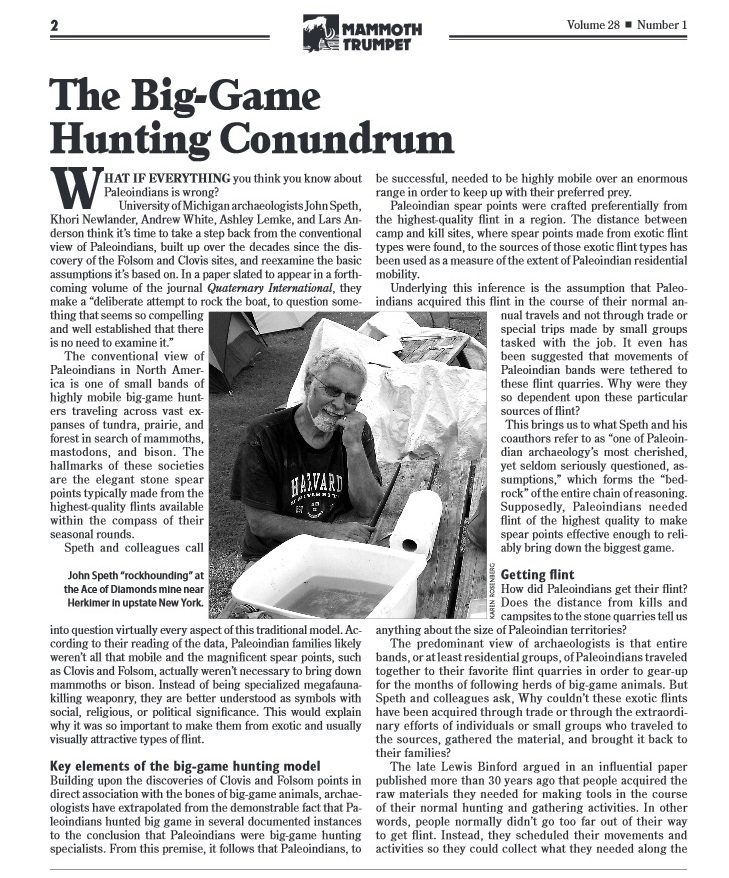Ancient stone tools sometimes still have traces of the blood of the animals they were used to kill or butcher preserved on their edges. And scientists are getting better at recovering those traces and identifying the species of the animals. This is especially important in regions where animal bones don’t preserve well and where blood residue and use-wear studies may provide the only clues to ancient diets.
The latest issue of Legacy, a publication of the University of South Carolina’s Institute of Archaeology and Anthropology, includes a preview of the results of this kind of research on Paleoindian tools from the central Savannah River area of Georgia and South Carolina.
So far, the research team has identified bison blood on several fluted points, including both Clovis and Redstone types of point. The bison in question could be the extant Bison bison or an extinct form known as Bison antiquus.
The authors refer to previous work that “found bison residue and residues for numerous extant animals on Clovis points but no evidence of other extinct fauna,” which suggests that “large megafauna were regionally extinct by the time of Clovis, were hunted infrequently, or that our sample size was just too small” to get a representative sample of Paleoindian prey species.
If additional testing of more artifacts confirms what they’ve found so far, the research team suggests that we may need “a fundamental shift in our thinking about early Paleoamerican hunting strategies.”
I think that fundamental shift is already underway.
Previous studies of blood residues on Paleoindian fluted points from Ohio show the same pattern now turning up in South Carolina and Georgia. Clovis points from the Nobles Pond site in Stark County were used to kill or butcher bison, caribou (or deer), and rabbits, but not apparently mastodons or mammoths.
University of Michigan archaeologist John Speth and his students also question the dietary importance of big-game hunting for Paleoindians. In an article on the Big-Game Hunting Conundrum I wrote for the Mammoth Trumpet I summarized why Speth thinks just about everything we think we know about Paleoindians might be wrong.


The Paleoindian period has a special fascination because of its extreme antiquity. But because of that antiquity it has been difficult to get a clear picture of the ways of life of these Ice Age peoples. New technologies, such as blood residue analysis, are adding details, but clearly we still have a lot to learn.